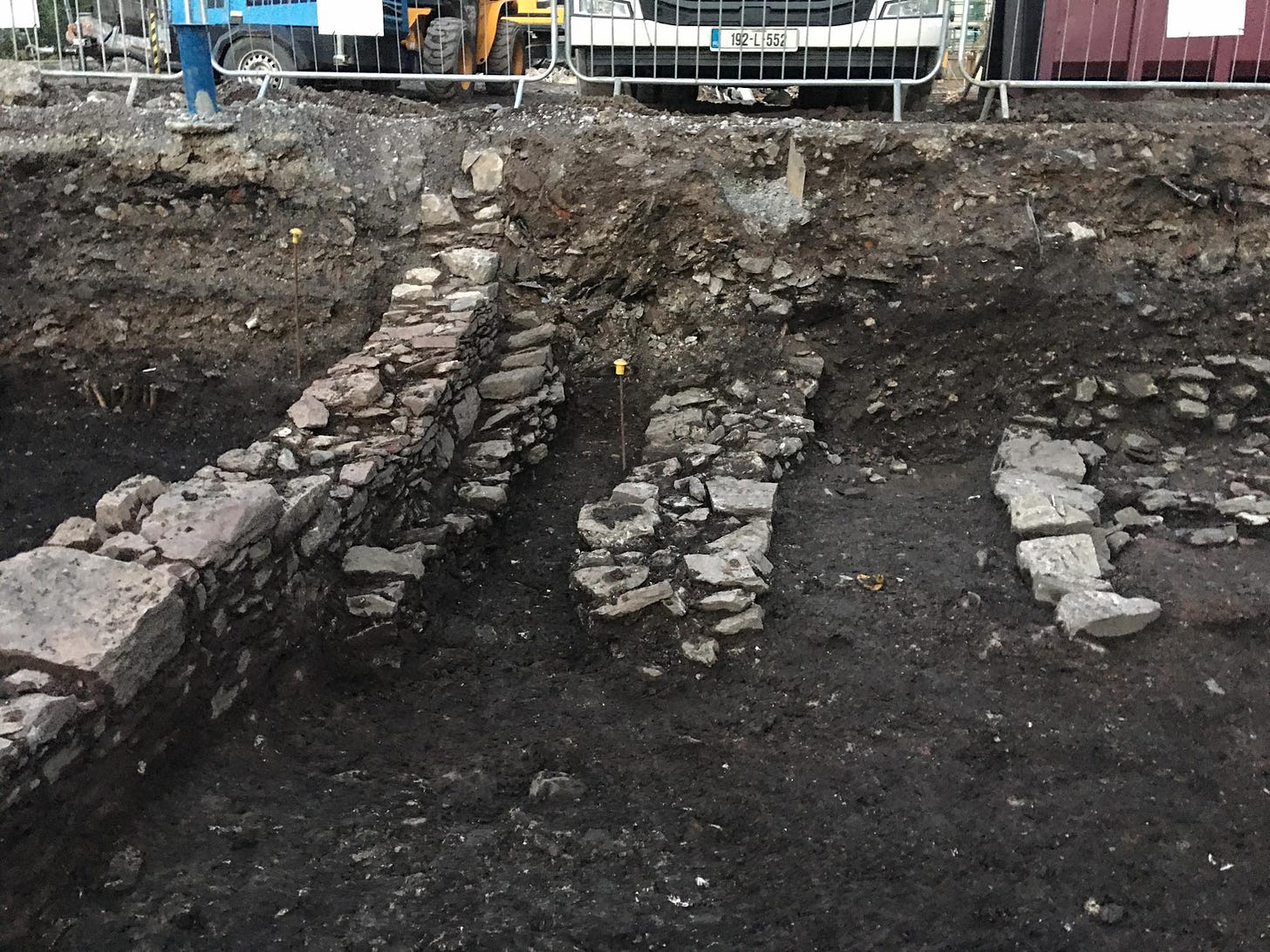Archaeological dig uncovers historic foundations at North Main Street student development
A Grattan Street local has photographed foundations unearthed during works on a new seven storey student apartment block on Cork's historic spine.
Foundations that could date back to the pre-famine era have been unearthed during works at 92-96 North Main St, where developers Bmor are constructing a seven-storey student apartment block.
Nearby resident and local historian George Patterson has photographed the excavations at the site. He said he believes the unearthed walls date to at least the mid-nineteenth century.
Part of the site was formerly the Munster Furniture Centre, which burned down in 2008. According to the National Inventory of Architectural Heritage, that building dated to between 1820 and 1840.
An Bord Pleanála granted planning permission to Bmor Developments to build the student accommodation, which will house 279 students in 49 apartments, including 24 apartments that sleep eight, as a Strategic Housing Development last November.
The site lies within the so-called “Zone of Archaeological Potential for Cork City” and in the medieval historic core, where successive layers of settlements date back many centuries.
An Bord Pleanála inspector’s report noted that “Archaeological investigations on the site in 2011 and 2019 have identified sub-surface archaeology. The remains identified are dated from medieval times to the 20th century.”
Mr Patterson, who sings in the band The Roaring Forties and has an MA in History from UCC, has lived on nearby Grattan St for 17 years and said the area has an “incredible history” and that he’d like to see attempts made to preserve some of the archaeological finds on the site.
“It might be possible to preserve some of the walls under glass as part of the development,” he said. “You could have plaques to identify what buildings you’re looking at. We could be working to try to preserve some of our city’s history.”
Avril Purcell of Lane Purcell Archaeology is the on-site archaeologist for the development.
She said it would not be practical to try to preserve the finds and that the nineteenth century foundations would be removed and that older buildings and artefacts would be found as the excavations continued.
“The problem we have with Cork is that it’s a city that was built on a marsh and we have a huge problem with water,” she said. “Even today, we spent most of the morning pumping out trenches full of water.”
“I know there have been some excavated sites preserved by putting them under glass in Dublin, but they don’t have anywhere near the problem with water that we have.”
“The idea that we’d find something that would stop development isn’t really how it works; we’re working very much in tandem with the construction project because we want to progress. The city needs to keep developing and growing.”
“Basically, excavation is destroying the archaeology, but in a controlled manner, where we record what we find as we go. So we’ll take out those nineteenth century foundations and then we can review older deposits as we go.”
She said the excavation works are not going to intrude on the old medieval wall of the city, because it is known that it runs roughly in line with the footpath on Grattan St.
Ms Purcell said artefacts have also been found during excavation works to date.
“What we find is basically the rubbish and detritus that people throw out: we have lots of pots, we have window glass, we have broken bottles and loads of animal bone, which basically shows us what they were eating,” she said. “They were the ultimate recyclers and composters: they accumulated all of this rubbish and would throw it out into their back gardens to try to come up a level out of the low-lying, wet, muddy ground.”
“We would start with 20th century rubbish and then as we go down we’d start finding the older stuff.”
Ms Purcell said excavation works were likely to be finished, and the construction phase of the development ready to begin, “by the end of the year.”
All archaeological work on the site is being undertaken in consultation with the City Archaeologist, Ciara Brett, Cork City Council’s press office said. “The City Archaeologist has inspected the site and receives regular progress reports from the licenced archaeologist on the site."
The student apartment block, which will also include two retail units and a café, guarantees public access to Coleman’s Lane, an adjoining historic laneway which is one of a maze of tiny side-streets which once connected North Main St to the Marsh, during daylight hours, although the lane will be gated and only accessible with a key fob by night.







